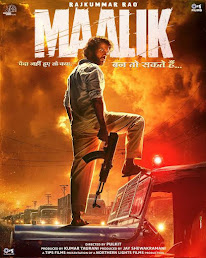According to a press note on RBI's website there will be new 50 and 20 notes, the old ones will remain in use and legal tender. The RBI- Reserve Bank Of India today announced that we will be able to see new Rs.50 and Rs.20 Notes. Post Demonetization by PM Narendra Modi, this was one big decision. People have been queing up since November- 8 announcement outside ATMs. The RBI announced via it's Twitter Handle today.
 |
| RBIs Twitter Handle Grab |
Official Statement from RBI-
Issuance of ₹ 50 banknotes without inset letter, with numerals in ascending size in number panels, and without intaglio printing
Issue of ₹ 20 banknotes with 'R' inset letter, with numerals in ascending size in number panels and without intaglio printing.
The Reserve Bank of India will shortly issue ₹ 50 denomination banknotes in the Mahatma Gandhi Series-2005, without inset letter in both the number panels, bearing signature of Dr. Raghuram G. Rajan, Governor, Reserve Bank of India, and the year of printing '2016' printed on the reverse of the banknote. The design and security features of these banknotes will be similar to the banknotes of ₹ 50 denomination with the ascending font of numerals in both the number panels issued earlier in Mahatma Gandhi Series- 2005, except the following:
Obverse
Intaglio printing
 |
| New 50 Notes- SPICEMEN |
The numeral ‘50’, RBI seal, Mahatma Gandhi’s portrait, RBI legend, Guarantee and promise clause, Governor’s signature, Ashoka Pillar emblem which were hitherto printed in intaglio (raised printing) are now being printed in offset (without any raised printing). Further, square-shaped identification mark on the left of the banknote has been removed.
Colour
While there is no change in the colour at the reverse, the colour at the obverse is lighter (due to removal of intaglio printing).
Latent Image
The vertical band on the right side of the Mahatma Gandhi’s portrait hitherto contained a latent image showing the denominational numeral ’50’. The latent image was visible only when the banknote was held horizontally at eye level. This feature is no longer present.
Reverse
There is no change in the reverse of the banknote.
NOTE-Trivia- The first ₹50 banknote denomination was brought into force and use by the Reserve Bank of India (RBI) in year 1975 under the Lion Capital Series. It had an Ashoka pillar but was replaced by a watermark of Mahatma Gandhi in the Mahatma Gandhi Series, in year 1996.
Rs.20- Twenty Note
 The Reserve Bank of India will shortly issue ₹ 20 denomination banknotes in the Mahatma Gandhi Series-2005, with the inset letter ‘R’ in both the number panels, bearing signature of Dr. Urjit R. Patel, Governor, Reserve Bank of India, and the year of printing '2016' printed on the reverse of the banknote.
The Reserve Bank of India will shortly issue ₹ 20 denomination banknotes in the Mahatma Gandhi Series-2005, with the inset letter ‘R’ in both the number panels, bearing signature of Dr. Urjit R. Patel, Governor, Reserve Bank of India, and the year of printing '2016' printed on the reverse of the banknote.
The design and security features of these banknotes to be issued now is similar to the ₹ 20 banknotes in Mahatma Gandhi Series- 2005 issued earlier, except the following –
Obverse
Ascending font
The numerals in both the number panels will be in ascending size from left to right while the first three alpha-numeric characters (prefix) will remain constant in size.
Intaglio printing
The numeral “20”, RBI seal, Mahatma Gandhi’s portrait, RBI legend, Guarantee and promise clause, Governor’s signature, Ashoka Pillar emblem which were hitherto printed in intaglio (raised printing) are now being printed in offset (without any raised printing). Further, rectangular identification mark on the left of the banknote has been removed.
Colour
While there is no change in the colour at the reverse, the colour at the obverse is lighter (due to removal of intaglio printing).
Latent Image
The vertical band on the right side of the Mahatma Gandhi’s portrait hitherto contained a latent image showing the denominational numeral “20”.The latent image was visible only when the banknote was held horizontally at eye level. This feature is no longer present.
Reverse
There is no change in the reverse of the banknote.
The image of the specimen of the banknote is as follows-
NOTE- Trivia- The first Rs.20 was introduced in 1972 by the Reserve Bank of India to contain the cost of production of banknotes in circulation.With the introduction of this banknote, the Reserve Bank started a major redesign of the motif of the Lion Capital Series banknotes.
























